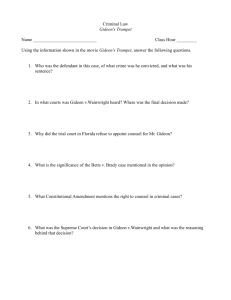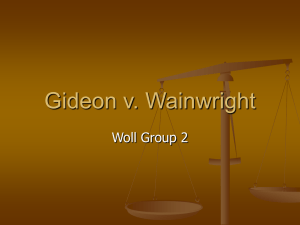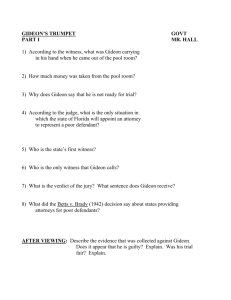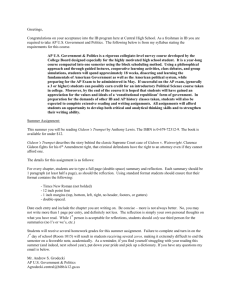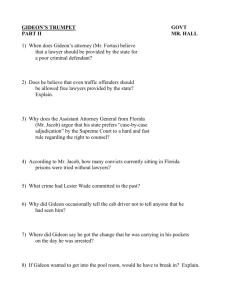NAME: The Gideon Case - Gideon V. Wainwright Introduction to the
advertisement
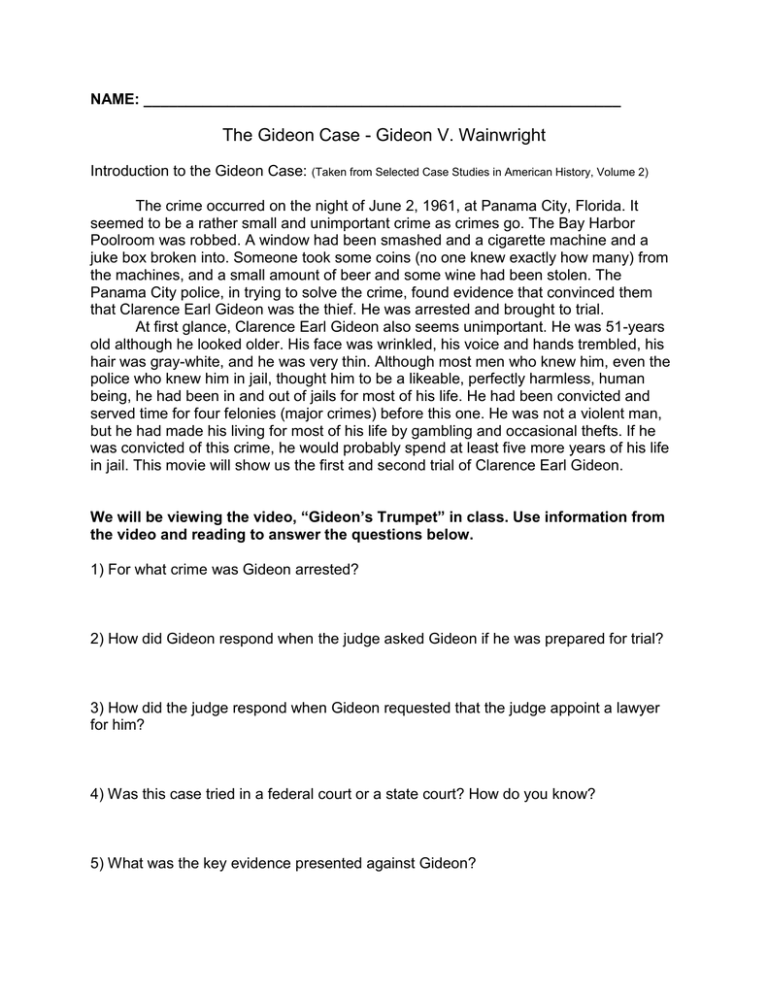
NAME: _________________________________________________________ The Gideon Case - Gideon V. Wainwright Introduction to the Gideon Case: (Taken from Selected Case Studies in American History, Volume 2) The crime occurred on the night of June 2, 1961, at Panama City, Florida. It seemed to be a rather small and unimportant crime as crimes go. The Bay Harbor Poolroom was robbed. A window had been smashed and a cigarette machine and a juke box broken into. Someone took some coins (no one knew exactly how many) from the machines, and a small amount of beer and some wine had been stolen. The Panama City police, in trying to solve the crime, found evidence that convinced them that Clarence Earl Gideon was the thief. He was arrested and brought to trial. At first glance, Clarence Earl Gideon also seems unimportant. He was 51-years old although he looked older. His face was wrinkled, his voice and hands trembled, his hair was gray-white, and he was very thin. Although most men who knew him, even the police who knew him in jail, thought him to be a likeable, perfectly harmless, human being, he had been in and out of jails for most of his life. He had been convicted and served time for four felonies (major crimes) before this one. He was not a violent man, but he had made his living for most of his life by gambling and occasional thefts. If he was convicted of this crime, he would probably spend at least five more years of his life in jail. This movie will show us the first and second trial of Clarence Earl Gideon. We will be viewing the video, “Gideon’s Trumpet” in class. Use information from the video and reading to answer the questions below. 1) For what crime was Gideon arrested? 2) How did Gideon respond when the judge asked Gideon if he was prepared for trial? 3) How did the judge respond when Gideon requested that the judge appoint a lawyer for him? 4) Was this case tried in a federal court or a state court? How do you know? 5) What was the key evidence presented against Gideon? 6) How would you have voted if you were a member of the jury, guilty or not guilty? 7) How well do you think Gideon defended himself? Why do you say this? 8) What was Gideon’s sentence? Do you think Gideon’s sentence fit the crime? Why? 9) According to Gideon, in his letter to the Supreme Court, which of his Constitutional rights were violated? In what amendment can that be found? 10) How many members are there on the Supreme Court? 11) How did the Supreme Court decide this case? 12) What was going to happen to Gideon because of this decision? 13) On what Constitutional grounds did Gideon make a motion to be set free and not be retried? 14) Compare the first trial with the second trial.
